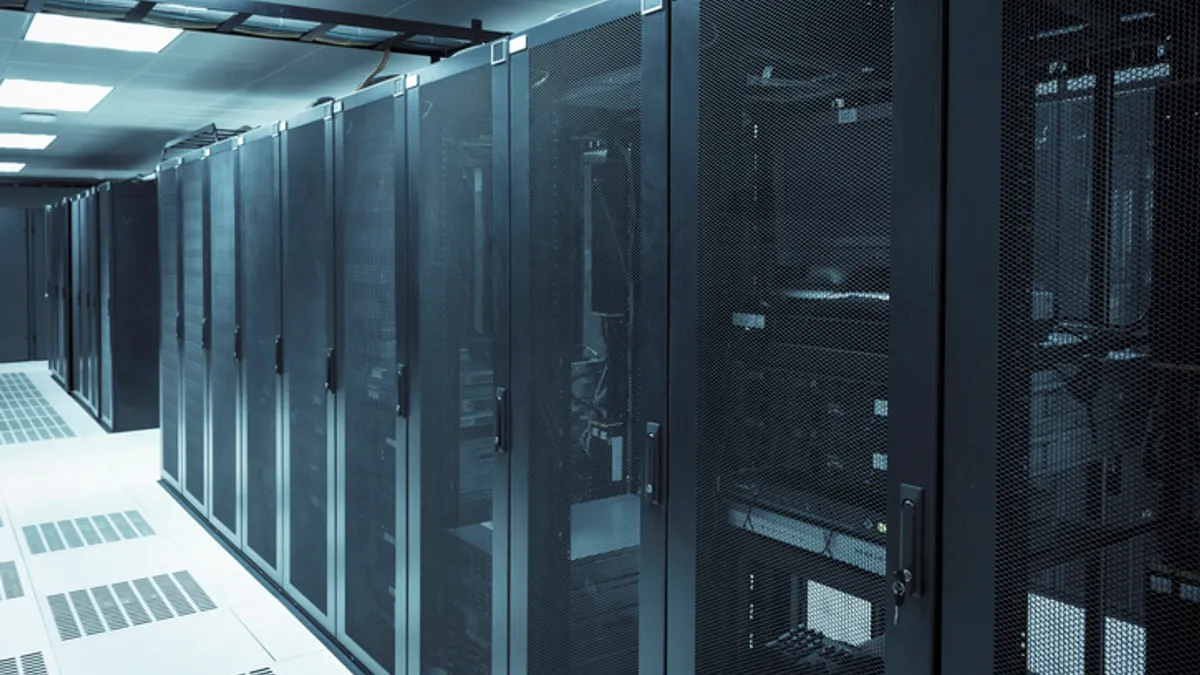Technology has transitioned from a cost play to a survival play because of the pandemic and that transition isn’t over even though companies have largely completed the migration to the cloud, the vice chair of PwC’s U.S. and global advisory practice, Mohamed Kande, told CFO Dive.
Late-stage pandemic technology is focused on front-office operations like customer engagement rather than the back-office functions that were crucial for staying afloat at the onset of the pandemic, Kande said.
“Earlier pandemic investment has been done,” he said. “Now there’s a different level of expectation.”
AI-powered bots that handle first-tier customer contact, whether over the phone or on a website, represent the kind of front-office tech investment that companies will feel compelled to adopt even after the pandemic recedes.
“When people call, their first-level of interaction might not be with people,” he said. “You see that in many different companies. When you call in and you get ‘Press one, press two,’ it’s a different way of navigating. When you’re on a website, you start chatting with a rep, and the rep is not a person. It’s AI.”
The goal behind the technology isn’t to replace employees who handle that type of work but to free them up to do more value-added work.
“It’s creating more capacity, so people can actually work other roles where we need their brains and their skill sets,” he said. “In the past, there was a fear that automation was going to remove jobs. Today, the narrative is that technology and automation create capacity for companies.”
Customer expectations
Payment and other technology to enable online transactions are also part of late-stage digital transformation because of changing business needs and customer expectations.
“Before, for restaurants to make money, you and I had to show up,” he said. “Now, [many] of the orders are online. It’s what we call the no-regrets move that companies have to make, because it’s more about survival of the business than saying, ‘If I do this, I will get more return on my investment.’”
Pre-pandemic, this level of automation was limited mainly to large enterprises but it’s becoming essential from a productivity and customer-expectation standpoint for businesses of all sizes
“We’re now seeing it at scale because it’s coming down to middle market,” he said. “So, whether you’re talking about restaurant chains, medium-sized businesses, everybody is now pushing to adopt technology because it’s a different way of running the business and also interacting with customers.”
Employee leverage
The war for talent is accelerating the trend because employers, struggling to fill front-line positions, are turning to automation as a lifeline.
“The attrition rate for people at warehouses is 80-90%,” he said. “The key trend is a shift of power from the employer to the employee. That’s what happened during COVID-19. It’s manifesting itself across the whole country and in other countries.”
The war for talent for remote workers is also driving adoption of late-stage technology because sought-after employees won’t settle for companies that can’t give them the technology they want.
“Companies now have to provide technology to people to give them maximum flexibility to do their jobs as they choose to do them,” he said. “First, they have to be on the cloud. Second, they have to give them information technology, collaboration tools, so they have 24-7 access to the corporate systems. So, a lot of the technology we’re seeing is around human capital transformation.”
That transformation requires a rethinking of policies. A mistake many companies made as the pandemic appeared to ease last year was linking people’s return to the workplace based on the job they did. That created push-back. Since then, companies have taken a different approach: linking return to where the employees are in their life stage.
“Are you a single parent with two kids at home?” he said. “When should you come back? It’s the personal situation, the life cycle of the people. It had nothing to do with the job they were doing. Many corporations made that mistake, creating categories of jobs that need to return to the office without understanding the stage of their employees’ lives.”
Given these trends, companies’ late-stage technology investment can be broken down into a handful of components. The first is automating front-office functions to meet customer expectations – online purchasing, for example – and to achieve productivity outcomes, such as using bots to manage first-level customer engagement.
The second is using automation to help fill gaps as front-line employees leverage their labor market advantage. And the third is attracting and retaining talent by offering technology that enables people to work when, where and how they want.
“The company that doesn’t allow that is the company that’s losing people,” he said. “It’s a fundamental shift, because we’re trying to give an answer to a business problem that has nothing to do with business.”
Innovation currency
Once companies' survival needs are met, late-stage technology will be key to future business growth, because new products and services will evolve out of the massive amounts of data the technology generates.
“One of the largest logistics companies today was not a logistics company five years ago,” he said. “Running logistics has nothing to do with running trucks; it has to do with AI. It’s a pure data play. So now, the currency is data. Many companies are thinking, ‘I have all this data. Where else can I expand my business?’
“So, the No. 1 question we ask clients today is, ‘Do you know who your competitors are going to be five years from today?’ That might not be the ones they’re competing against today. And the second question is, ‘How do you make money in five years?’ Of the CFOs and other executives we ask that question, more than half cannot answer it.”





















